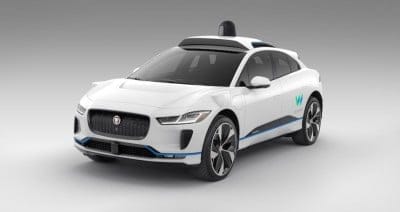—
I’ve been writing for quite some time now about the unstoppable development of autonomous vehicles, an evolution that makes perfect sense despite what the skeptics say.
While Waymo continues to accumulate and learn from autonomous driving miles thanks to its Waymo One service in Arizona, it’s building a factory in Detroit to adapt its own vehicles and is already starting to use its new Jaguar I-Pace on public roads, two companies that have been slow off the mark to join the self-driving race, Renault and Nissan, have signed an alliance with Waymo for their respective domestic markets, potentially expanding to other countries.
At the same time, California has licensed two Chinese companies, AutoX and Pony.ai to provide robotaxi services in the Golden State. Another established player, Argo AI, has announced a $15 million investment in Carnegie Mellon to set up an autonomous vehicles research center. The university has already financed similar initiatives with Uber, which is now busy completing the acquisition of Mighty AI, a startup that identifies objects for recognition by computerized vision systems.
Not to be outdone, Apple seems to have renewed its interest in autonomous driving and has bought Drive.ai, which I’ve already spoken about, but that had financing problems. Apple will no doubt be hoping to reinvent the car and transport in general, in line with its successful approach to other sectors.
Volvo has now launched a line of completely autonomous trucks — without a cab — to transport materials between one of its logistics centers and the port of Gothenburg. The initiative, named Vera, is intended as a solution for the transportation of large volumes very precisely over relatively short distances that are managed through a control tower.
How should we read these signals? On the one hand, as I’ve already commented, very little progress in the development of autonomous vehicles for private use, and instead the development of fleets operated by companies that previously simply manufactured automobiles. On the other hand, we’re seeing more and more expansion and more new entrants into some markets seeking to exploit the robotaxi, which could save companies 70% of their operating costs by eventually dispensing with drivers. In the short term, thanks to companies such as Uber or Lyft, there’s been a spike in the number of people turning to driving for a living. Soon, all these jobs will be lost in time, like tears in rain.
We are witnessing the development of a technology with potentially enormous transformational power: imagine our cities with far fewer vehicles, operated as a service through autonomous fleets, while goods transportation is carried out by autonomous trucks. The next step, the use of self-driving vehicles in our cities, simply requires the necessary investments in infrastructure and for the acquisition of vehicle fleets. Some investment will come from automotive companies able to see that the future is not about selling vehicles to individuals who will then park them for most of the time, but instead in fleets that maximize their use.
It all makes for a very interesting future, especially if you bear in mind that the technology is already with us.
—
This post was previously published on www.medium.com and is republished here under a Creative Commons license CC BY-ND 3.0.
—
Photo credit: Enrique Dans
